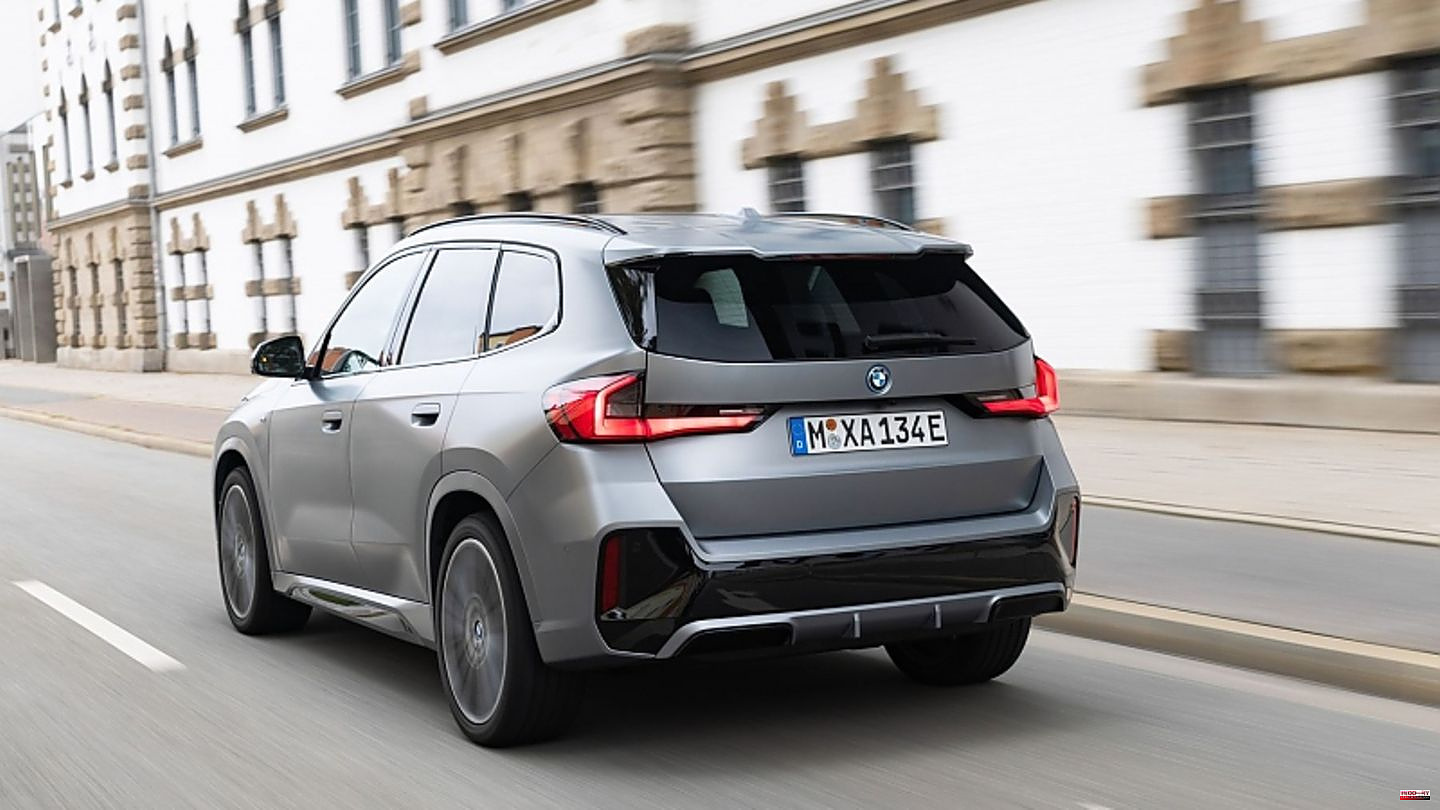The BMW iX has an impressive presence. This is not only due to the bulky body of the electric SUV with its powerful kidney, but also to the good range values, which even exceeded the factory specifications in various tests. BMW never tires of celebrating this result and points it out at almost every presentation of an electrified one. After all, the mileage of the flagship electric car should also affect its smaller brothers, because the BMW iX1 xDrive30 is also equipped with two fifth-generation electric motors.
"The e-machines are one size smaller than on the iX3 so that they fit into the package"; explains e-drive specialist Doris Soika. The 5.0 M170SF electric motor at the front and the 5.0 M170SR at the rear together create a continuous output of 200 kW / 147 hp, which increases to 230 kW / 313 hp for ten seconds via a boost and a torque of 494 Newton meters. The iX1 thus manages the standard sprint from zero to 100 km/h in 5.6 seconds and has a top speed of 180 km/h. The compact e-crossover is sufficiently motorized and can keep up well everywhere, even in the restrained Eco driving mode. When overtaking, the boost function helps anyway by pulling the left rocker switch behind the steering wheel for a few seconds. The spread of the individual driving programs is clearly pronounced, with the powertrain in Sport reacting most ambitiously to the driver's propulsion requests. That doesn't change the steering, which is very eager from the middle position. You feel like you just have to think in that direction and the car will start moving in that direction. However, the steering feel never gets nervous and after a few kilometers you get used to this peculiarity. We just would have appreciated a little more feedback.
Nevertheless, the BMW iX1 lives up to its ancestor. Thanks to dietary measures such as an aluminum bonnet (ten kilograms lighter than before) and new rims (less twelve kilograms), the vehicle weight is 2,010 kilograms. This helps in the corners, which the iX1 xDrive30 takes quite confidently, showing a tendency to understeer that can be quickly recaptured with a sensitive lift of the accelerator pedal. The four-wheel drive is only active when required. Because basically the iX1 is a front-wheel drive and the rear axle only participates when traction is needed. As soon as you start sailing, both e-machines even say goodbye for a short time, which helps with efficiency.
BMW specifies a WLTP average consumption of 19.0 kWh/100 km. On our first test drive, we got 20.6 kWh/100 km and the 64.7 kilowatt hour battery (net) showed a remaining range of 269 kilometers with a charge level of 75 percent. According to BMW, the iX1 xDrive30 should travel a maximum of 440 kilometers. If you attach the iX1 to a DC fast charger, it shovels power into the storage with a maximum of 130 kW, which is not necessarily an outstanding speed value. The batteries should be filled from 10 to 80 percent in 29 minutes. If you opt for the optional three-phase charger for alternating current, you can charge the battery from zero to 100 percent in 3:45 hours. It takes 6.5 hours as standard. On bad roads, the sports suspension (body lowered by 15 millimeters) with the frequency-selective dampers, which regulate the oil flow and thus the comfort via bypass valves, performs noticeably better than the models with combustion engines: The iX1 xDrive30 handles transverse grooves more confidently and springs more harmoniously.
In terms of dimensions, the third generation of the BMW X has increased significantly compared to its predecessor. The compact crossover is now 4.50 meters long (plus 5.3 centimeters), has a wheelbase of 2.69 meters (plus 2.2 centimeters) and has grown in height by 4.4 centimeters to 1.64 meters. So the iX1 emulates its big brother iX a bit when it comes to performance. The good thing is that extra sheet metal affects the interior. So there is also plenty of room for tall passengers in the rear. In addition, the rear seat can also be moved by 13 centimeters in length. Nobody needs more iX.
The iX1 is also based on its big brother when it comes to infotainment. That means: Curved monitors, which are a bit smaller than the iX with a size of 10.25 inches for the virtual instruments and 10.7 inches for the infotainment touchscreen. This does not detract from the usability, especially since the voice input works well. However, even with the iX1, the menu navigation is sometimes a bit convoluted, so the recuperation setting options are not easy to find. That leaves the price of the BMW iX1 xDrive30, which will be available from dealers from November 1st. That amounts to at least 55,000 euros. Certainly not a bargain, but well below that of the iX.







